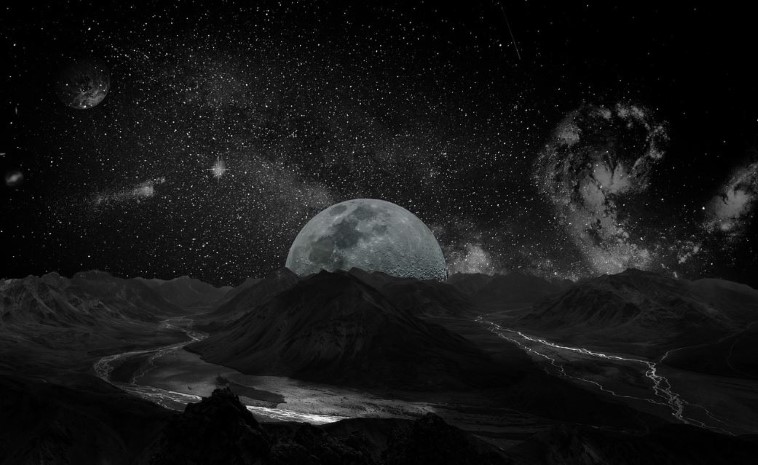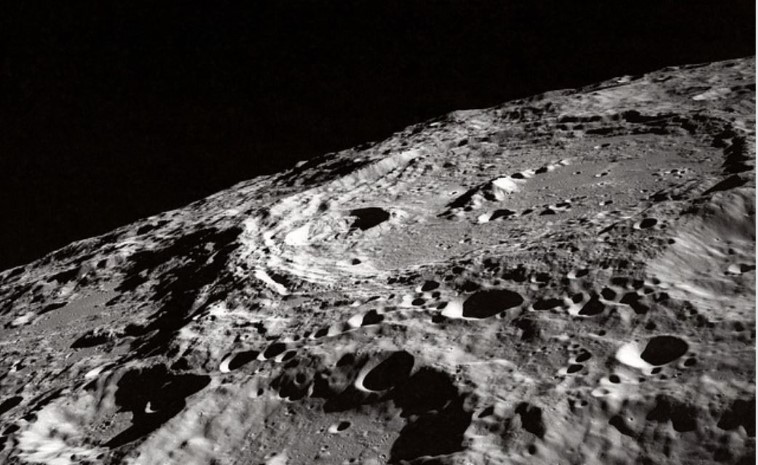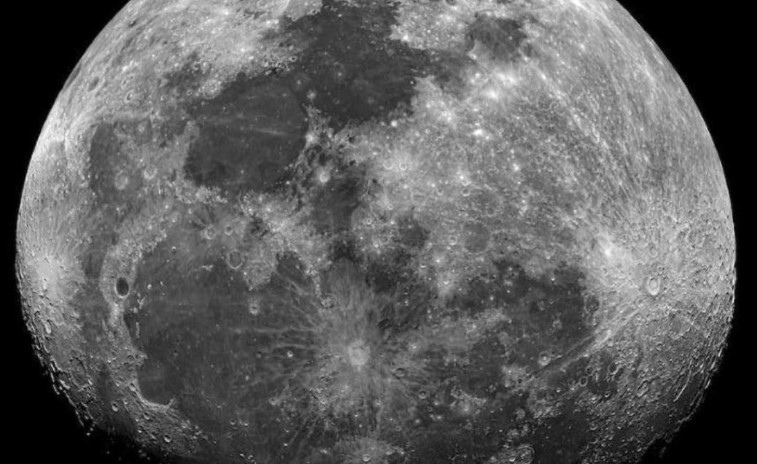Is there any water on the Moon?

Until the invention of the telescope, it was not clear whether there was water on the Moon or not. There were only guesses about it without any material basis, with a bit of healthy logic.
Thus, Anaxagoras believed that the relief of the Moon does not differ from the Earth, and later Ptolemy claimed that all heavenly bodies are perfect spheres, which was then accepted by the Christian church, so for a long period of time, we stopped even thinking about it, let alone doubting that!
And then Michael Mostlin, a German astronomer and professor of mathematics who lived from 1590 to 1631, managed to see large bodies of water, mountains, and even an atmosphere on the Moon, and all that with the naked eye!
And then the telescope was finally invented, and astronomers were delighted to discover on the Moon one thing – seas. They also discovered mountains, valleys, and craters, but the seas were the most important.
It was in the 17th century, at a time of intense search for extraterrestrial civilizations, for life in other places in the universe, so maybe that also contributed to the fact that astronomers, more out of wishful thinking than with their eyes, saw large bodies of water on our satellite.

Some have even spotted ships in the lunar seas.
Today we know that on the Moon there are only some shipwrecks of spaceships, but there are no rivers, lakes and seas, nor can there be, because our satellite does not have an atmosphere, and without it, water, if it somehow appeared at all, would immediately evaporate.
Why? Because in order to be in a liquid state, water needs atmospheric pressure!
Now this is where the story becomes more interesting.
In the sixties of the last century, planetary scientists realized that water could still exist on the Moon, but frozen and only in areas that are permanently hidden from the Sun, i.e. in deep craters at the poles of the Moon, because the sun’s rays never reach them.
So, the sun’s rays melt the ice and liquid water immediately evaporates.
Then in the 1990s, NASA’s Lunar Prospector mission tried to find evidence for this assumption, but its photos were too blurry for such a thing.

However, scientific knowledge multiplied, new conclusions were drawn, so in 2008 a study appeared in Nature magazine, which spoke about the discovery of hydrogen trapped in glassy material that was brought from the Moon to earth by the Apollo mission.
Scientists hypothesized that the glassy material originated from ancient lunar volcanoes.
Another confirmation of the existence of water on the Moon came from the Indian spacecraft Chandrayann-1, which was equipped with NASA’s Mineralogy Mapper instrument, which also confirmed the existence of traces of water in some lunar craters.
Based on all the positive reports, scientists finally came to the conclusion that there must be significant amounts of frozen water in the deep craters on the Moon.
In fact, estimates said that there are over 600 billion kilograms of water ice in those craters!
Such craters, which the Sun does not reach, are located at the poles of the Moon, and that is why cosmonautic countries, primarily the USA, China and Russia, and then India, are very interested in these areas.
The water from those craters will be able to be used for the production of drinking water, fuel, air, for various needs of future industry, etc.
The areas on the Moon that are permanently in shadow began to form about 4.1 billion years ago, after which the Moon acquired its current tilt of rotation over time, creating large containers at the poles for storing frozen water. By the way, it originates from comets that also fell on the Moon before the dawn of the solar system.

Although this might sound very promising, new studies say that there is much less ice water on the Moon than previously thought!
The scientists came to this conclusion based on the calculation of the tilt of the Moon over time in combination with data on relief heights, on the basis of which the area of the shaded areas was calculated, which again made it possible to obtain data on the amount of water trapped in the ice.
In addition, in 2009, NASA deliberately crashed a satellite into a crater. The impact sent a cloud of dust from the ground, which was analyzed in detail. The result was that the soil at the bottom of the crater is 5.6 percent ice water.
It is clear that other studies and calculations are forthcoming, and that a more precise insight into the amount of water and ice water on the Moon will only be determined by direct insight. That’s why landers are sent to the Moon and new information about this matter is expected to emerge in the foreseeable future, so keep checking the blog for new updates on the subject!
Want to read more about the universe? Visit our blog!

